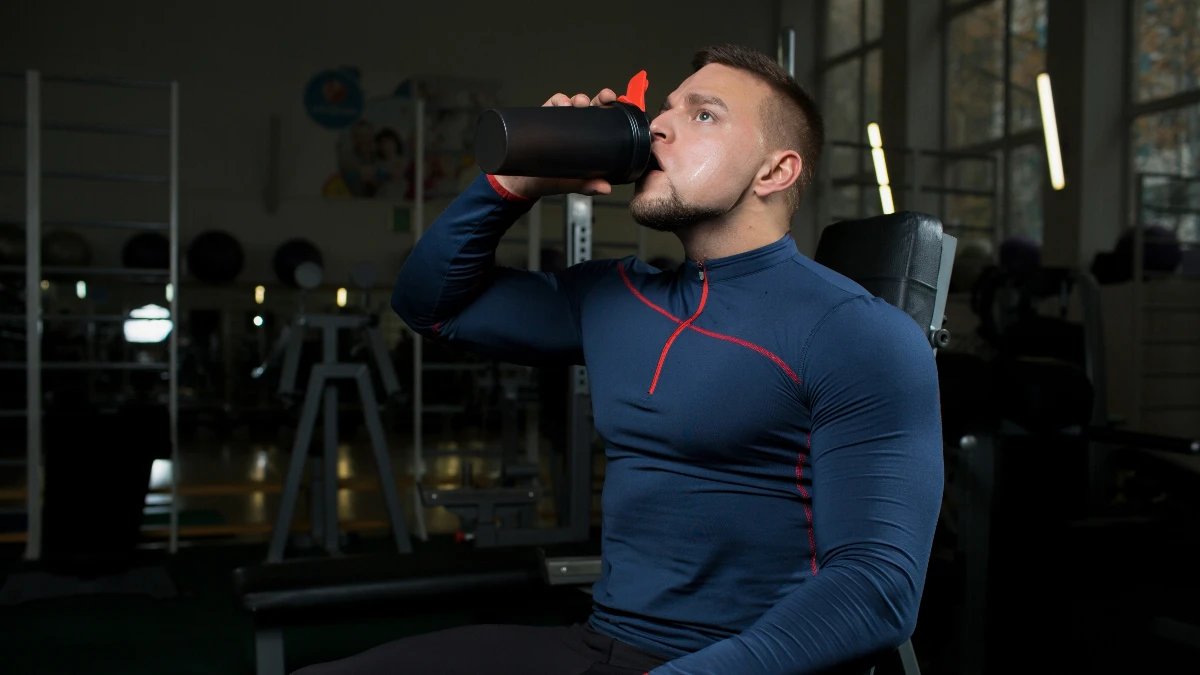If you’re over 45 and active, getting older can be very frustrating. You stick to a good training plan and a healthy diet, but you’re not seeing muscle growth. You might even be losing muscle.
This isn’t in your head. It’s a real change in your body. Starting as early as 40, people can get sarcopenia. This is the loss of muscle and strength that comes with age. Some studies show 15.4% of people 40 and up are already at risk. This can lead to being frail and losing your freedom.
It can feel like your body is always breaking down (catabolic) instead of building up (anabolic). The problem isn’t that you’re not trying. The problem is a new challenge called Anabolic Resistance.
The Real Reason It’s Harder: Understanding Anabolic Resistance After 45
Turning the ‘Dimmer Switch’ Back Up: How to Fight Anabolic Resistance
1. Power Up Your Protein
Your body’s “dimmer switch” now needs a stronger signal. Prioritize the amino acid Leucine, the primary “on switch” for muscle protein synthesis (MPS).
of protein per kg of body weight, spread across 3-4 meals.
2. Send a Louder Signal
Resistance training is the most potent stimulus to “re-sensitize” your muscles to protein. This forces the (mTOR) pathway to pay attention again.
per week is the non-negotiable foundation for overcoming AR.
3. Cool the “Inflammaging”
Chronic inflammation (inflammaging) creates cellular “static” that blocks growth signals. Fight it with diet and lifestyle changes.
(like fatty fish) & antioxidants (from fruits/vegetables) to reduce static.
The main reason building muscle is harder after 45 is a real medical condition: Anabolic Resistance (AR). This just means your body gets worse at “stimulating muscle protein synthesis (MPS)” from things like protein and exercise. MPS is the process of building new muscle.
Think of your muscle-building response like a “dimmer switch,” not an “on/off” switch. After 45, that dimmer switch gets turned down. The same workout and protein shake that gave you great results at 25 now barely makes a difference.
This happens for a few reasons:
Hormone Changes
Building hormones (like testosterone) go down. Breakdown hormones (like cortisol) often stay high.
Chronic Inflammation
A low level of constant inflammation, sometimes called “inflammaging,” contributes to this resistance.
Broken Signals
Your body’s main “growth engine,” the (mTOR) pathway, stops listening to your body’s signals.
Anabolic resistance isn’t just annoying. It’s the main cause of sarcopenia. That’s the age-related muscle loss that affects 5-13% of people aged 60-70 and up to half of people over 80.
1. Master Progressive Overload (The Non-Negotiable Trigger)

The most important signal to flip the anabolic switch is Progressive Overload. This just means you must always increase the demand on your muscles over time to force them to grow. Without this, nothing else will work well.
But if you’re over 45, you’ve got some “mileage” on your body. The old advice to “just lift heavier” can lead to joint pain and injury. The 2025 way to do this is not just about lifting more weight. It’s about finding smarter ways to challenge the muscle, not the joint.
Kinesiology expert Dr. Andy Galpin explains that your fast-twitch (Type II) muscle fibers are the first to go as you age. These are the fibers for strength and power. You need high-force training to keep them.
You can use “smarter” progressive overload in a few ways:
Increase Load (Weight)
This is the classic way. Add a small amount of weight (2.5-5%) only if your form is perfect. For small exercises, 1.25lb micro-plates are a great tool.
Increase Reps
Before you add weight, add reps. If 3 sets of 8 (3×8) gets easy, your new goal is 3×10 or 3×12 with the same weight.
Increase Sets
Adding more total work by going from 3 sets to 4 sets of an exercise is a great way to signal growth.
Change Tempo (Time Under Tension)
This is a key strategy for the 45+ lifter. Slow down the “lowering” part of a lift to 3-4 seconds. This increases the time your muscle is working and builds muscle with less joint stress.
Shorten Rest Times
Cutting your rest time (like from 90 to 60 seconds) increases metabolic stress. This is one of the three main ways muscles grow.
2. Hit the Leucine Threshold at Every Meal

If training (Way 1) is the ignition, protein is the fuel. But because of anabolic resistance, your body needs more protein at one time to turn on muscle building (MPS).
The “key” for that ignition is an amino acid called leucine. Leucine is the main signal that flips the mTOR switch, your body’s muscle-building control center. If you don’t get enough leucine in a meal, the growth signal is weak or doesn’t happen at all.
The proven target to beat AR and trigger MPS is about 3 grams of leucine per meal.
What does that mean for you? It means you need 30-40 grams of high-quality protein at each meal.
The biggest mistake people make is not how much protein they eat all day, but how they spread it out. Most older adults get this wrong, especially at breakfast. A 2023 study of elderly patients found their average leucine at breakfast was only 0.58 g.
In that study, zero percent of people hit the 3g leucine target at breakfast. They were missing a huge chance to build and keep muscle.
| Meal | Protein Target (g) | Leucine Target (g) | Food Examples to Hit the Target |
| Breakfast | 30-40 g | ~3 g | 1 scoop whey protein (~3g leucine) |
| 4 large eggs + 1 cup Greek yogurt (~3.1g leucine) | |||
| Lunch | 30-40 g | ~3 g | 5 oz grilled chicken breast (~3.3g leucine) |
| Dinner | 30-40 g | ~3 g | 5 oz grilled salmon (~3.0g leucine) |
| Pre-Sleep | 30-40 g | (varies) | 1.5 cups cottage cheese or 1 scoop casein protein |
3. Raise Your Total Daily Protein to 1.6 g/kg

After you fix your per-meal targets, you need to make sure your total daily protein is high enough. The old RDA of 0.8 grams of protein per kilogram of body weight (g/kg) is confusing.
That number is the minimum to prevent you from being sick. It is not the best amount for active adults over 45 who want to build muscle.
Today, experts and groups like the PROT-AGE study group agree. Active older adults should eat 1.2 to 1.6 g/kg of body weight every day. Some research shows that up to 2.2 g/kg is safe and works well for building the most muscle.
A good goal to aim for is 1.6 g/kg. Here is the math:
- Your weight in kg x 1.6 = Your Daily Protein Target (g)
- Your weight in lbs x 0.73 = Your Daily Protein Target (g)
Dr. Stuart Phillips, a top researcher on protein and aging, says, “Substantial evidence supports the increased consumption of high-quality protein to achieve optimal health outcomes… [to] help prevent age-related sarcopenia.”
Here is how Way 2 and Way 3 work together. Your muscles can’t use one giant 100g protein shake. The muscle-building response to a single meal has a limit. You must hit your total daily goal (1.6 g/kg) by eating 30-40g of protein at 3 or 4 different meals.
4. Make Sleep Your Primary Recovery Tool

Sleep isn’t just rest. It’s an active building process. When you are in a deep sleep, your body releases key building hormones, like Human Growth Hormone. If you’re over 45, making sleep a priority is as important as training.
The muscle-killing effect of bad sleep is fast and serious. Just one night of no sleep can cut your muscle protein synthesis by 18%. It also creates a hormonal state that breaks down muscle. That one fact shows that a bad night’s sleep can wipe out a perfect day of eating and training.
This isn’t just a one-night problem. Studies show that older adults with poor sleep quality have less muscle mass and weaker grip strength.
A smart 2025 strategy is to use pre-sleep protein. Research shows that protein eaten before bed is “effectively digested and absorbed… thereby increasing overnight muscle protein synthesis rates.”
The plan is simple:
- Make 7-9 hours of quality sleep a priority every night.
- Eat 30-40 grams of a slow-digesting protein (like casein, cottage cheese, or Greek yogurt) 30 minutes before bed. This feeds your muscles all night long.
5. Control the Catabolic Stress Switch (Cortisol)

Turning on the “Anabolic Switch” is only half the job. You also have to turn off the main “Catabolic Switch”: cortisol. Cortisol is your body’s main stress hormone. A little cortisol from a workout is normal. But chronic high cortisol from life, work, or bad sleep is terrible for muscle growth.
Chronic high cortisol kills your muscle gains in three ways:
Direct Breakdown
It tells your body to break down muscle tissue.
Hormone Competition
It fights with testosterone for the same spots in your cells. This blocks testosterone from doing its job.
Signaling Inhibition
This is the big one most people miss. Chronic stress has been shown to stop the mTORC1 signaling pathway.
This should be a “lightbulb” moment for you. You can do your training (Way 1) and your protein (Way 2) perfectly. But if you are chronically stressed (Way 5), you are canceling out your own hard work. Your stress is the hidden problem.
You have to control this switch with proven stress-management habits:
Mindfulness/Meditation
This is not a “soft” tip. A 2024 study showed that 12 weeks of mindfulness meditation lowered inflammatory markers (CRP and IL-6). Those are two things linked directly to muscle loss. A daily 5-10 minute practice using an app like Calm or Insight Timer is a real physical fix.
Low-Intensity Exercise
Things like yoga and walking are proven to help manage stress.
Deep Breathing
A simple 5-minute practice of deep, slow breathing can turn on your “rest and digest” nervous system and lower cortisol.
6. Use Strategic Cardio That Builds (Not Blunts) Muscle

You’ve probably heard the myth that “cardio kills gains.” The truth is, if you’re over 45, cardio is something you must do. It’s great for your heart, for fat loss, and it even helps you recover better from lifting.
But the worry isn’t totally wrong. A 2022 review confirmed the “Interference Effect” is real. This means doing strength and endurance training together can slow down muscle growth at the fiber level.
This happens because of competing signals in your cells. Long cardio sessions turn on the “endurance” pathway (AMPK). This pathway can turn off the “growth” pathway (mTOR).
The 2025 solution isn’t to stop cardio. It’s to be smart about it so you get the benefits without the problems.
Separate Sessions
The interference effect is “minimized by allowing sufficient intervals” between workouts. The easiest way to do this is to separate them by at least 6-8 hours. For example, lift in the morning and walk at night. Or, do cardio on your “off” days from lifting.
Choose Low-Impact
The 2022 review found the interference was worse with running than with cycling. Stick to low-impact choices. An incline treadmill walk, cycling, rowing, or hiking is a smarter, joint-friendly option.
Use HIIT for Efficiency
High-Intensity Interval Training (HIIT) is a great way to get fit and save muscle. Good examples are sled pushes or 20 minutes on a bike (30 seconds fast, 60 seconds slow).
7. Leverage the Big 3 Anabolic Supplements

Supplements are helpers, not fuel. They only work if your training, nutrition, sleep, and stress (Ways 1-5) are already in order. For people over 45, a few key supplements can help fight anabolic resistance and improve results. The “Big 3” proven supplements for 2025 are Creatine, Vitamin D, and Omega-3s.
Creatine Monohydrate
This is the most studied and effective legal supplement for muscle growth. For older adults, creatine adds to the gains in muscle mass, strength, and function when you also lift weights. It may also help bone health and lower inflammation.
- Dose: 3-5 grams per day.
Vitamin D3
Being low on Vitamin D is a direct risk factor for muscle loss. It is specifically linked to the shrinking of Type II (fast-twitch) muscle fibers. These are the exact fibers that shrink as you age. Having enough Vitamin D is vital for keeping muscle, cutting inflammation, and improving your body’s response to training.
- Dose: 800-2,000 IU per day. It’s best to get a blood test to see if you are low and find out your specific dose.
Omega-3 Fatty Acids (EPA/DHA)
Omega-3s are a great tool to fight anabolic resistance. Research shows they can help re-sensitize older muscle to the growth signals from protein and exercise. They also help your nerves talk to your muscles, which is key for strength.
- Dose: 2-3 grams of combined EPA/DHA daily.
| Supplement | 2025 Recommended Daily Dose | Primary Anabolic/Anti-Catabolic Function |
| Creatine Monohydrate | 3-5 grams | Adds to training response; increases muscle mass & strength |
| Vitamin D3 | 800-2,000 IU (or as needed by blood test) | Fights muscle loss from deficiency; helps muscle function |
| Omega-3s (EPA/DHA) | 2-3 grams (combined) | May reduce anabolic resistance; helps nerves and muscles work |
8. Commit to a Joint-Friendly, High-Frequency Program

The last step is to put all these ideas into a weekly program you can stick with. A major 2016 review found that training muscle groups twice per week builds more muscle than training them only once per week. The American College of Sports Medicine (ACSM) agrees.
The hard part for anyone over 45 is doing this without pain. This means you need a smart plan.
Actionable Tip 1: Smart Exercise Selection: The most important rule is this: “give up any exercises that constantly leave you in pain. Find a better variation.”
Instead of: Barbell Back Squat -> Try: Heels-Elevated Goblet Squat.
Instead of: Straight Bar Deadlift -> Try: Trap Bar Deadlift.
Instead of: Barbell Bench Press -> Try: Dumbbell Bench Press.
Actionable Tip 2: The Non-Negotiable Warm-Up
You cannot skip your warm-up. Every workout must start with 5-10 minutes of light cardio. Follow that with dynamic stretches to get your muscles and joints ready for hard work.
Actionable Tip 3: Schedule Deloads
Being consistent for a long time is better than being intense for a short time. As one expert says, “You cannot go 52 weeks a year.” Plan a “deload” week every 4-8 weeks. This means you lower your volume or intensity. It’s key for recovery and preventing injury.
Conclusion
Flipping the “Anabolic Switch” after 45 isn’t about one secret. It’s about building a new operating system for your body. It takes a combined approach: send the right signals (progressive overload), give it the right fuel (protein and leucine), and manage the environment (sleep and stress).
You are not fighting aging. You are fighting anabolic resistance. And as the proof shows, this is a fight you can win. As longevity expert Dr. Peter Attia says, “If you have the aspiration of kicking ass when you’re 85, you can’t afford to be average when you’re 50.”
By using these 8 proven strategies, you are not just stopping muscle loss. You are actively flipping the anabolic switch. A simple, real-world way to start is to use Way 2 at your very next meal. Make sure you get at least 30g of protein.


